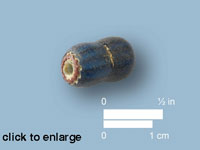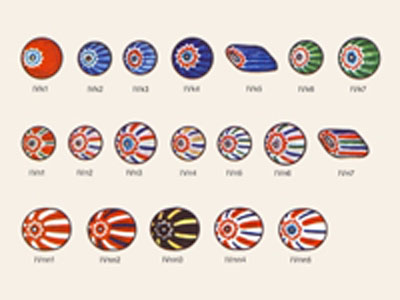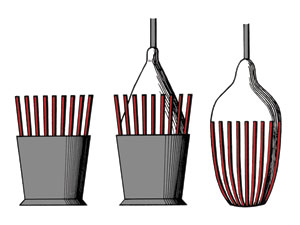Glass Bead
Numerous glass beads were discovered in the excavations of the St. John’s site.

This specimen is unusual on two counts. It is actually two beads which were not separated during the manufacture process. It is also a multi-colored bead. Most beads from St. John’s are either robin’s-egg blue or blue and white striped.
Beads are identified by comparison with published examples like this selection by Parks Canada.

Glass beads in the 17th century were generally made using two processes. Our example was made using the technique known as drawing. A gather of molten glass was inserted into an open bucket mold which was lined by colored rods of glass. The gather was then inflated, embedding the colored glass rods into the glass. Repeated insertions with different colors of glass rods built up the multi-colored bead.

After all the colored rods were embedded, the gather of molten glass was then stretched out into a very long tube. The tube was then broken into segments and the individual beads polished by rolling them in a barrel full of sand and ashes. This made the individual beads round.


